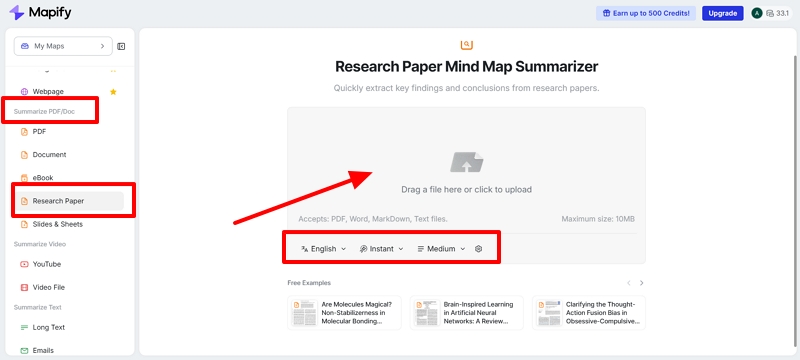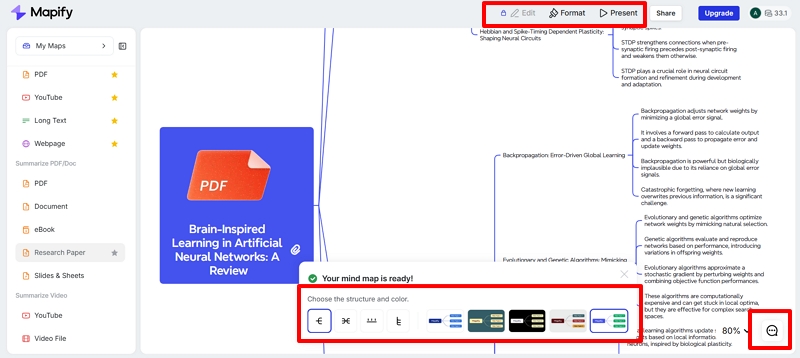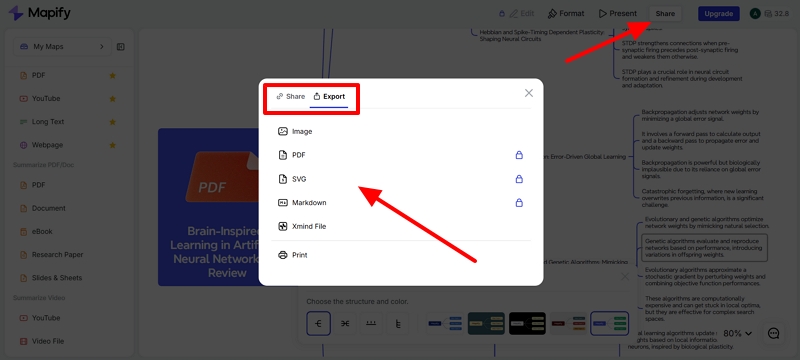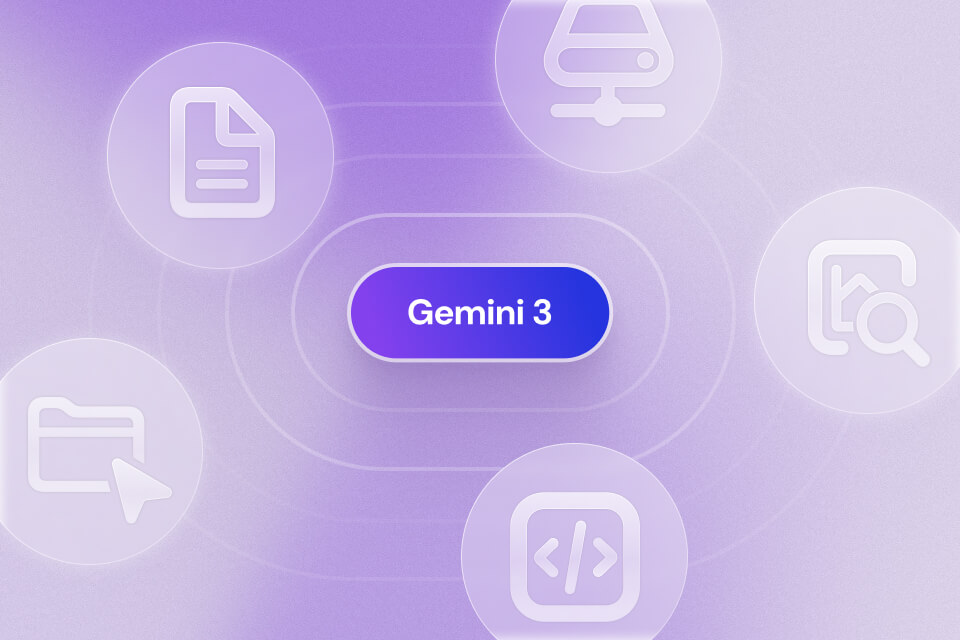A literature review is often considered one of the most challenging and time-consuming tasks for students and researchers. It typically involves reading dozens, if not hundreds, of scholarly articles, each filled with complex arguments, dense jargon, and numerous citations. This process can easily stretch on for weeks or even months, leaving little time to thoroughly analyze or write.
To make this process more manageable, AI-powered research paper summarizers have become invaluable tools. These tools condense long academic texts into structured and easy-to-understand summaries. By automating the initial step of the literature review, AI summarizers save time and reduce cognitive load, ultimately streamlining the research process. This post will explore how an AI research paper summarizer works, why it is so effective, and best practices for using it.
What Is a Research Paper Summarizer
It is a software used to summarize long research papers into understandable and structured summaries. When you summarize a research paper, you get information regarding the introduction, methodology, results, and conclusion. AI summarizers go beyond keyword extraction and can read context, logic, and interrelationships of the text. This enables them to absorb the main idea of complicated studies, making it easy for students and scholars to understand content.
Differences Between Research Paper Summarizers and Generic Summarizers
Unlike generic summarizers, an AI research paper summarizer focuses on academic and scientific texts. Here is a comparison table to help you understand the distinct differences between the two:
| Feature | Research Paper Summarizers | Generic Summarizer |
|---|---|---|
| Input Type | Academic papers with structured sections (e.g., abstract, methods) | General prose, news articles, blogs |
| Structure Awareness | Analyzes paper sections, citations, figures, and equations | Focuses on main topics and general content |
| Customization Options | Let users set summary length, emphasize specific sections, or extract references | Usually summarizes the entire content with limited customization |
| Output Format | Highlights key findings, arguments, and limitations | Provides an overall summary and removes redundancy |
| Semantic Understanding | Handles field-specific terminology and maintains semantic links | Relies on general content understanding |
How AI Summarizers Help With Literature Reviews
After getting a clear understanding of what a scientific paper summarizer is, let us dive into the different ways AI summarizers help researchers:
1. Speedy Extraction: AI summarizers help a researcher extract research objectives, hypotheses, and critical findings within a few minutes and save hours of skimming through lengthy documents.
2. Structured Overviews: These instruments summarize the information into distinct parts, such as methodology, results, and discussion, which are simpler to examine as opposed to a flat overview.
3. Streamlined Comparisons: AI tools can create summaries of several papers, thereby allowing one to compare the results and immediately identify similarities or differences between different studies.
4. Mind Map Visualization: Some summarizers use mind maps as a visualization format, enabling users to see the relationships between various studies and how concepts evolve throughout the literature.
5. Multilingual Support: AI summarizers have the ability to assist the study of non-English language users to remove language obstacles.
Best Practices for Researchers Using AI Summarizers
Moving on, we will be looking into some of the best practices that researchers carried out as they used the best research paper summarizer tool:
1. Ensure Certainty: It is always necessary to verify the summaries given by AI against the original research paper to be sure that information is not missed.
2. Use to Save Time, Not to Replace: AI summarizers are not to substitute your personal critical thinking and academic analysis, but they can make this process move much faster.
3. Correct Citation of References: You should remember that you should use the original materials of the research and not the summary created by AI in order to be academically honest.
4. Integrated Workflow: Introduce AI summarizers to reference management platforms like Zotero or Mendeley, to manage, cite, and otherwise make the research process easier.
How to Use Mapify to Summarize a Research Paper
As a university professor or researcher, you may need to review numerous research papers to prepare for lectures or to gain insights into a particular topic. To quickly digest multiple papers without reading each one in full, you can rely on AI summarizer tools like Mapify. This tool enables you to create mind maps in seconds, helping you visualize key concepts without wading through endless documents.
Mapify offers flexibility by allowing you to customize the look and feel of your mind map. It also supports multiple file formats, ensuring compatibility with your preferred research materials. Furthermore, you can export the mind map in various formats, including PDF, Xmind, SVG, Image, or Markdown, making it easy to share or integrate into your work. The tool’s intuitive interface ensures both beginners and professionals can navigate the platform with ease.
Instantly turn your content into mind maps with AI
Get Started Now3 Steps on Using Mapify to Summarize Research Papers
Step 1: Upload your research paper file
Start by accessing Mapify through your browser. You can log in to your account directly and find the option "Research Paper" under the "Summarize PDF/Doc" section. Then, upload the research paper file you wish to work on. You can adjust the “Advanced Settings” to refine the summary according to your specific requirements.

What's more, you can upload a paper file from the Research Paper Summarizer page to start turning it into a mind map.
Step 2: Edit the AI-generated mind map of your research paper
Once the mind map is generated, you can edit, format, or present it according to your needs. You can also modify the structure and color of the map using the bottom tab. If you have any questions or need clarification, simply click on the “Chat” icon to interact with Mapify's AI Assistant.

Step 3: Share or export your mind map
Once you're satisfied with the mind map, click the “Share” button to copy the mind map link and share it with colleagues or researchers. Alternatively, go to the “Export” tab and download the mind map in your preferred file format.

Final Thoughts
In conclusion, we’ve explored the significant role that research paper summarizers play in streamlining the literature review process. By utilizing AI summarizers, researchers can save valuable time, reduce cognitive load, and focus on analyzing key findings. We’ve also introduced Mapify, one of the most effective AI summarizer tools, which generates detailed mind maps and supports various file formats to provide flexibility and accuracy throughout the research process.
By following the best practices outlined, researchers can leverage Mapify to enhance their workflow, from summarizing research papers to creating easily shareable and exportable mind maps. Whether you're a student, professor, or researcher, using Mapify can be a game-changer in simplifying the research process and improving efficiency.
Instantly turn your content into mind maps with AI
Get Started Now





